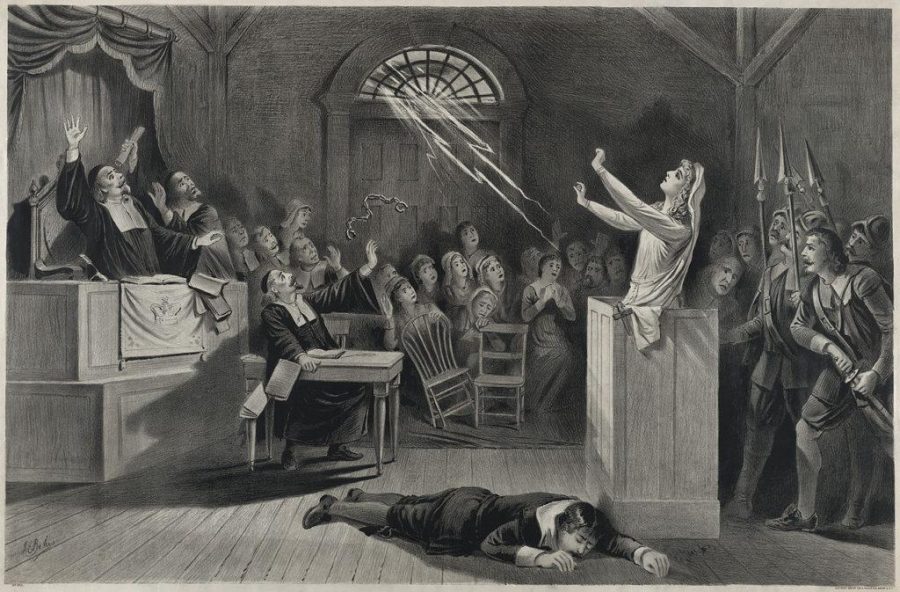When you think of a witch, what comes to mind? Most likely a cartoonish old woman, flying on a broomstick across the full moon, wearing all black and a pointy hat. Some other images that might come to mind are a cauldron, striped stockings, maybe Ouija board and a black cat.
Halloween is approaching quick, so I was browsing Netflix for some spooky shows to get me in the Halloween mood. I stumbled on a series called “Salem,” about the Salem witch trials. It seemed interesting and definitely spooky. I was expecting some crazy men hunting innocent women. But that isn’t what I got. The show represents witches as truly evil women who sacrifice their unborn children, shove frogs down the throats of old men and use their minds to control sick little girls and frame innocents. In the very first episode one of the witches is called a hag, drips with ooze and gore and attacks a poor girl. This show was offensive to me personally as a Wiccan, and I started thinking about all the offensive inaccuracies that represent witches and Wiccans in media.
There are usually two types of witches in TV shows and movies. The first type is evil, ugly, old women who desire youth and beauty and use dark magic to get it. They often eat children or hearts or sacrifice living things. Some examples include “Snow White and the Huntsman,” “Stardust,” “Hocus Pocus” and, of course, “Hansel and Gretel.” The second type is a young, sexy woman who can be good or evil and is more of a superhero than a witch. Examples of these include “Charmed,” “Buffy the Vampire Slayer,” “Practical Magic” and “Sabrina the Teenage Witch.”
All of these shows, while containing maybe one small detail of true Wiccan practice, are extremely misleading. If you call someone a witch, you most likely mean to insult them, think they are ugly, or slutty, or manipulative or creepy. But the word “witch” doesn’t mean what you think it means.
Let me clarify that a witch and a Wiccan aren’t necessarily the same thing. Wicca is a pagan religion that worships the sun and moon. Witchcraft is essentially spiritual DIY: making things to improve one’s life. While someone can be a witch and Wiccan, a witch doesn’t necessarily have to be Wiccan and visa versa. Special powers aren’t a thing, though each follower has gifts and believes in magic. Witches don’t worship the devil. Most of them don’t even believe that the devil exists. They don’t eat hearts, kill living things and definitely don’t eat children. Also, their sole purpose in life isn’t to destroy the lives of good, Christian men. A witch can be a man or a woman. Despite what certain shows and books will tell you, a male witch is not called a warlock.
“Charmed,” one of my favorite shows about witchcraft, makes fun of Wiccans, projecting them as crazy lonely women whom have no idea what they’re talking about and think they have powers. The only items that Wiccans use that relate to witchcraft as depicted in “Charmed” are a “book of shadows,” candles and the symbol of the triquetra – a symbol that, in the show, represents “the power of three” as in the three sisters, but in real life it represents the maiden, the mother, and the crone, the three phases of the Moon Goddess throughout the year.
The sexualization and the malformation of witches is insulting. Since the beginning of witchcraft (thousands of years ago), witches have been punished and misrepresented. In past centuries if you were a deemed a witch you would be executed or at the very least branded because it’s so terribly harmful when a person makes healing balms, wears crystals or lights a candle on the full moon. Just like with any other kind of discrimination or stereotype, witches should be represented with accuracy and dignity.



bryan • May 16, 2018 at 10:34 am
I couldn’t agree more.
A friend told me to watch the witch movie,
Wanted to see their take…
And totally wrong…on so many levels
It’s usually of Christian thought
And I was right..
I definitely don’t believe in this thing they call a devil or Satan
It’s all made up…crap..
Interesting movie though
However not true..